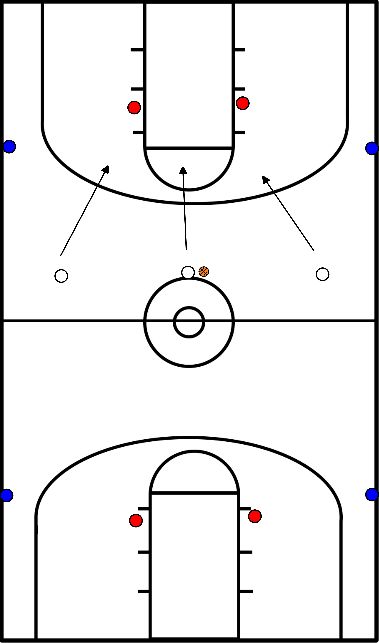Basketball drills for technique defense
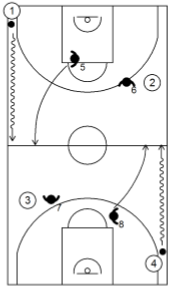
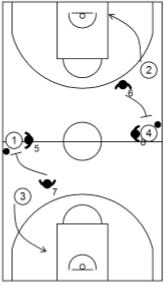
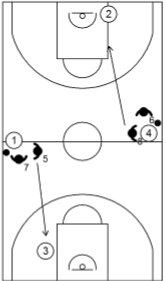
Requirements:
players must be able to individually defend the man with the ball Â- players must be able to dribble
Objective:
Set up kick directly over the center line.
Organization:
2 against 2 across the longitudinal half Â- losers must defend in the next round Â- the dribbler must be over the centre line within 4 seconds (the trapper counts down)
the trapper moves aggressively towards the half way line just before the dribbler crosses it (but due to his speed and the position of his defender is not able to change direction) Â- the trapper widens himself, but moves the foot closest to the touchline backwards slightly, so that he can close the touchline with 1 or 2 slides Â- the dribbler must never pass between the two defenders
As soon as the dribbler grabs the ball, the trapper stays with it Â- the other defender sprints towards the free attacker
Teaching Points:
defender forces the dribbler to the side, but must keep an appropriate distance, taking into account the dexterity and speed of the dribbler Â- defender must force the dribbler to move at high speed along the touchline to the attacking half
Variations:
left and right
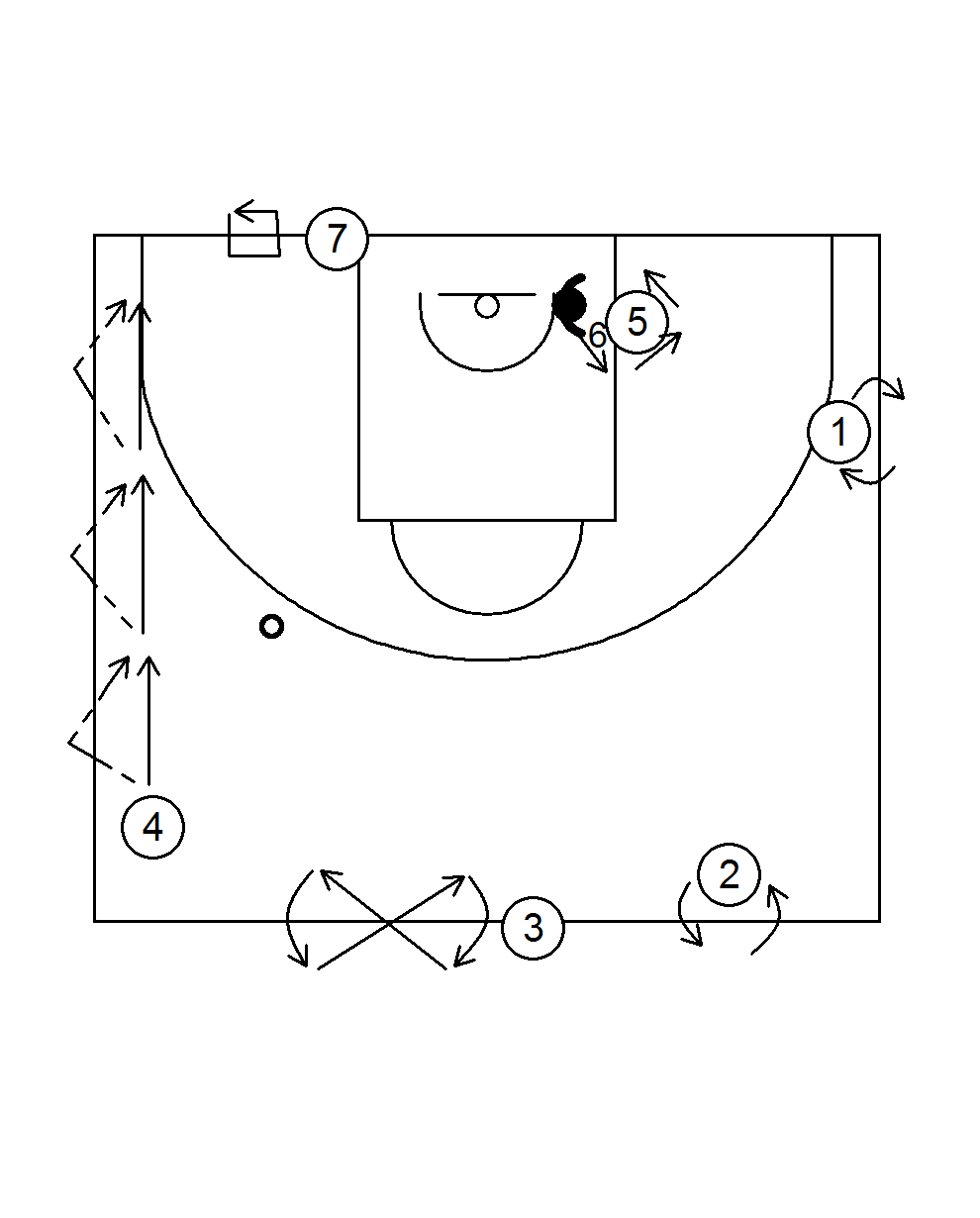
Requirements:
players must know what the correct defensive posture is have
Goal:
- reinforce good habits regarding defensive position
- To increase speed and flexibility of footwork
Organisation:
- do as circuit, 1 minute each time
- player 1 jumps sideways with 2 feet left and right of the line
- player 2 does that forwards and backwards.
- players jump with 2 feet forward wide - narrow - wide. With a jump in the air they do a 180 degree jump and start over again.
- player 4 passes the ball through the wall to himself and goes with slides to the position where he catches it again. Makes it more and more difficult for himself by increasing the distance.
- player 5 defends the mid post and chooses every time another position (behind, swim over - full front - swim over low and back again)
- player 7 makes a square with jumps on 1 foot (feather by landing) always 2x with right, then 2x with left. First left, then right etc.
Teaching points:
- knees bent
- head above the
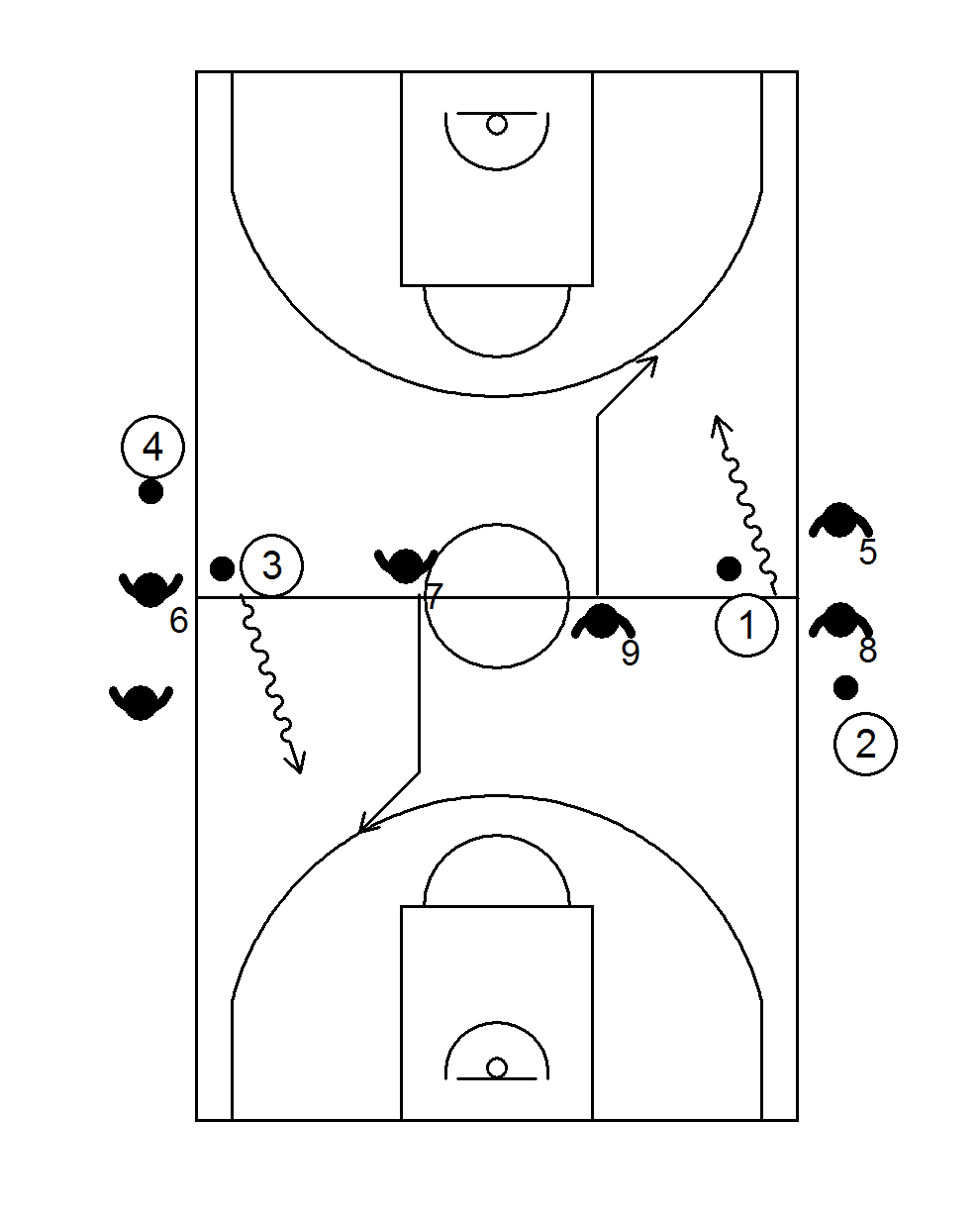
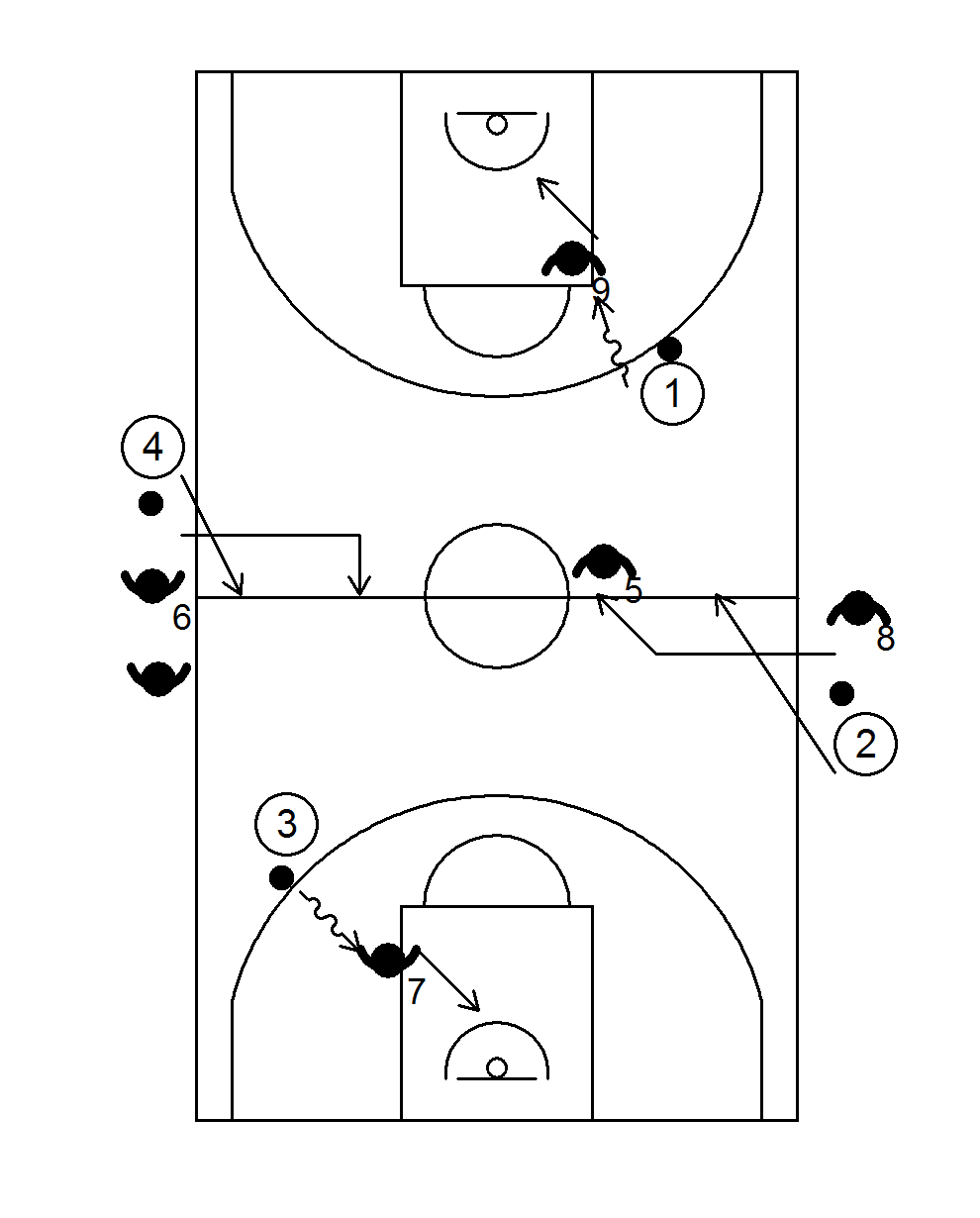
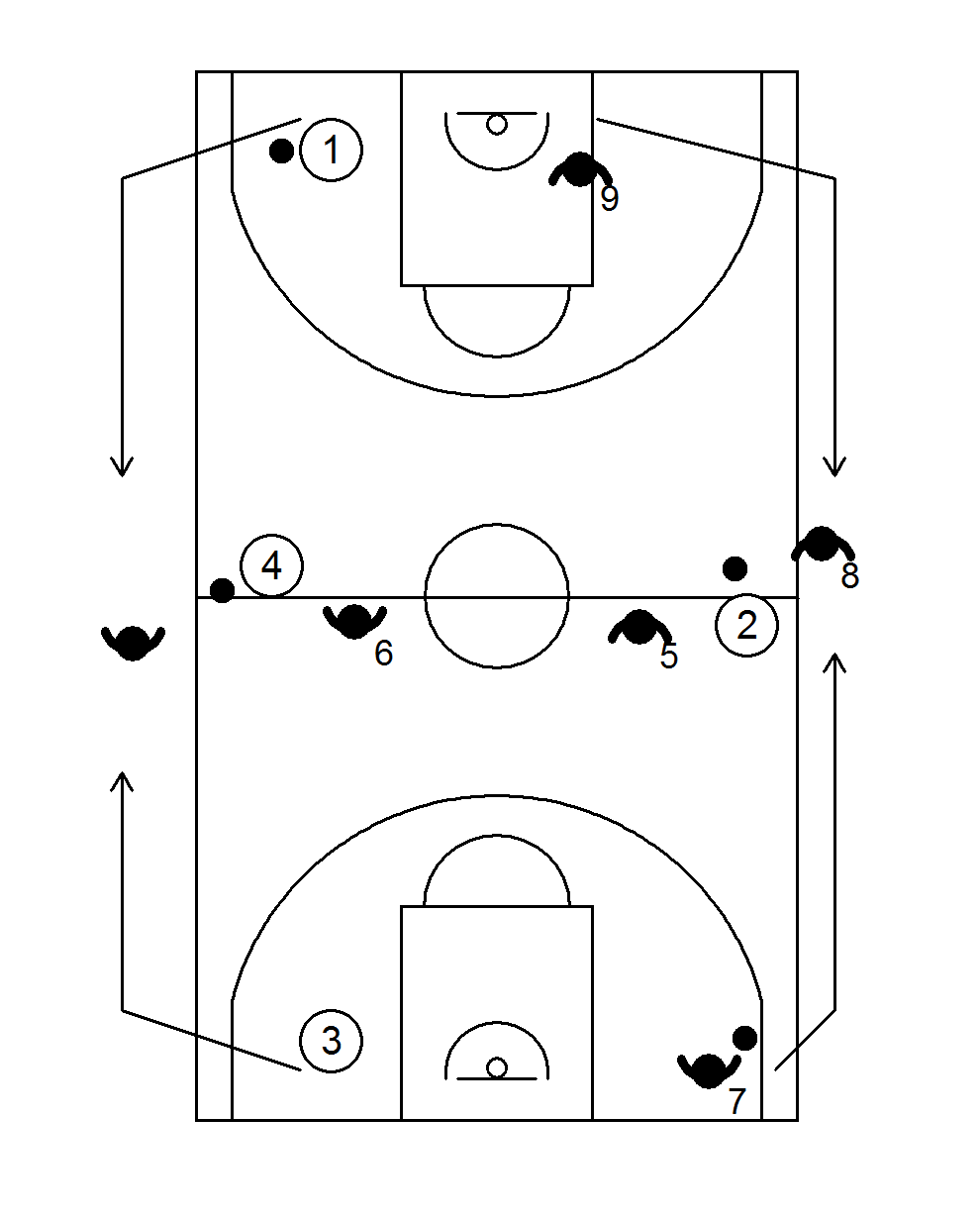
Requirements:
players must be able to defend the man with the ball individually (slides)
Goal: apply individual defensive technique in a simplified game situation
Organisation:
- attackers use one quarter of the playing field
- is not allowed to cross the baseline
- plays 1 against 1
- the defender may only step over the half-way line once the attacker has put one foot over the half-way line (the attacker may make feints, if the defender steps too early he must first put both his legs back behind the line)
- the defender first has to sprint to get his position between man and basket, then stay with slides between man and basket
- winner will attack on the other half of the court
- Loser keeps on defending in this quarter (turning in at the halfway line).
- the next pair starts when the predecessor takes the rebound.
Teaching Points:
- make sure you overtake the attacker by a large margin and only then take the defensive position.
- then immediately move backwards with slides
- In case of a defensive fault, the attacker is the winner.
Variations:
- let the defender keep his hands behind his back if you want to accentuate his footwork
- You can give good defenders a handicap by having them start 1 or 2 steps behind the attacker
- attackers can be slowed down by having them dribble behind their back in front of the 3-point line, etc.
- Player blue passes to red and sprints to red for a close-out.
- Player red tries to get into the "paint" to score.
- Player blue is going to try to prevent this.
- Either blue can steal the ball
- point for blue
- Either red can score
- point for red
- After a possible goal is score, red takes rebound, passes to the next in line.
- Blue goes to the position of red.
The exercise now starts again with the next players.
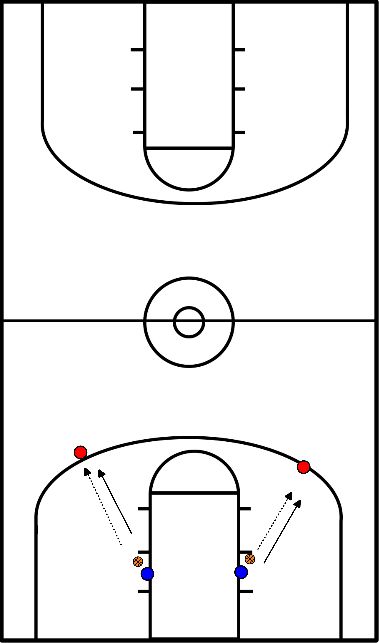
- 2 teams, both behind the baseline.
- One group has a ball.
- On the go signal, one player from each team leaves for the cone in front of them.
- The player with ball tries to make a layup and the player without ball tries to prevent it.
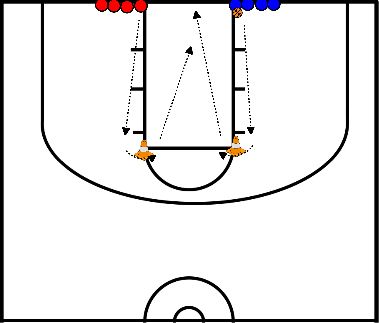
- Starting position:
- 1 attacker
- 1 defender
- 1 passer with ball
- Other players stand behind the passer
- Progression:
- Attacker must run free to receive the pass
- Once the pass is given, they play 1 on 1
- Stay on a quarter court
- Progression:
- Put the better players together
- Maximum of 5 dribbles
- Regression:
- Pass may be returned to the passer
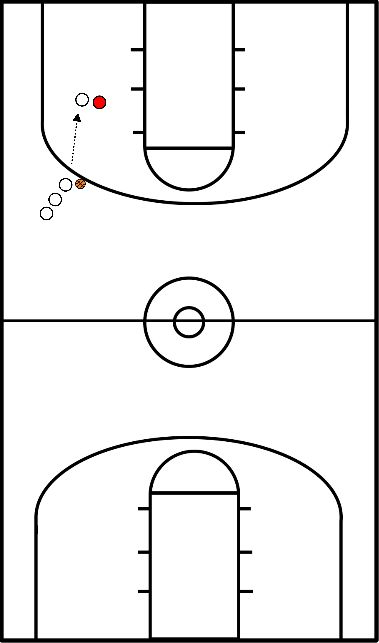
- Blue stands behind the free throw line.
- Red stands with his back to blue with the ball.
- On the starting signal, blue sprints to the baseline and sprints back to defend
- Red sprints to the center line and back to attack.
- Always score.
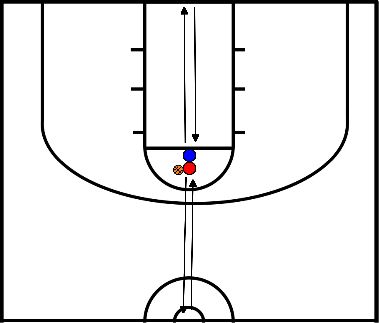
- The attacker is given very little space to maneuver past the defender
- The attacker is not allowed to look at the ball
- The attacker accelerates
- The defender starts working on his footwork
- Once past the hats, the field is wider and scoring is possible
- Always score
- Variation: the defender stands in the middle of the narrowed field and the attacker starts further back so you get a more game-like situation
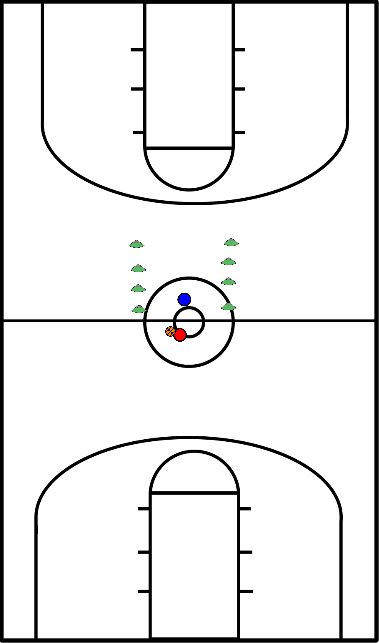
- Starting lineup:
- 2 groups baseline side by side
- 1 group has a ball
- Progression:
- Playing 1 against 1
- Until the center line, defense step slide passively
- After the center line plays 1 against 1
- Progression:
- Active defense during step slide
- Extra defender under goal
- Regression:
- Passive defense
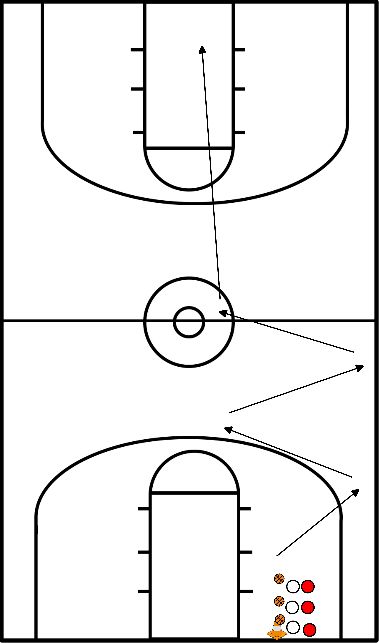
- Starting lineup:
- 2 groups at the level of the free throw line
- 2 players top of the bucket
- Conduct:
- Coach throws ball -or collide or roll-.
- 2 players fight for the ball and play 1-on-1
- Defense must be between ball and goal
- Progression:
- Score with up to 5 dribbles
- Regression:
- AFTER
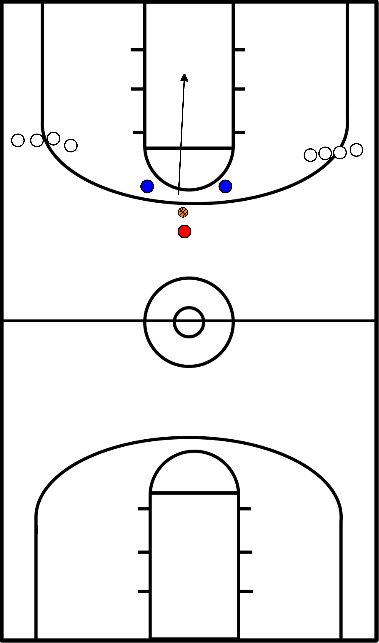
- Base lineup:
- 3 players in defense
- 3 players on offense
- Players not participating wait at the center line in 3 groups
- Coach has the ball
- Sequence:
- Coach passes to 1 player
- Player opposite runs to the center line first and then returns to defense
- Play 3 against 3
- At ball loss, score, rebound, ball goes to coach
- Offense becomes defense
- Quickly line up again and next group plays
- Progression:
- AFTER
- Regression:
- Run defender less far
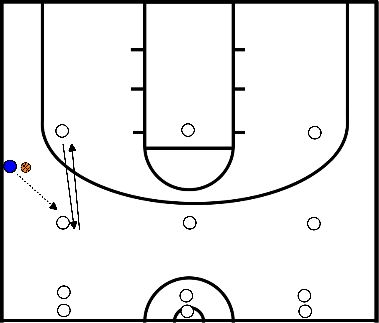
- Starting lineup:
- 2 players defense on each side of the court
- 2 players at the height of the extension of the free throw line on each side of the court
- 3 players on offense
- Conduct:
- 3 players play 3-on-2
- The rebounder gives an outlet pass to a player on the side of the court
- The rebounder joins in offense to the other side of the court
- Progression:
- AFTER
- Regression:
- NA
